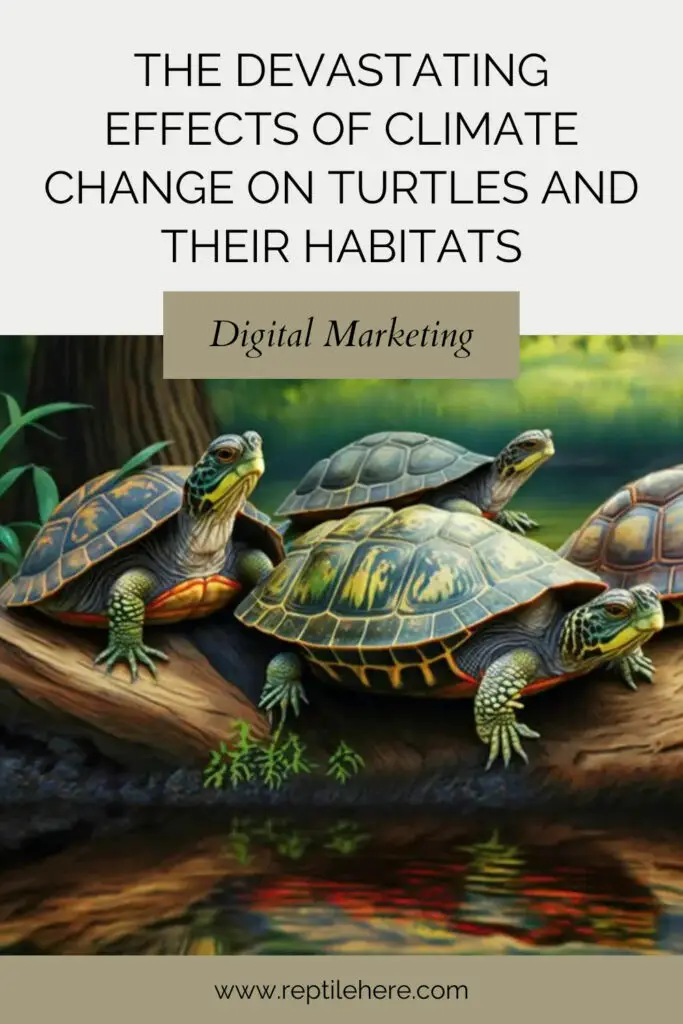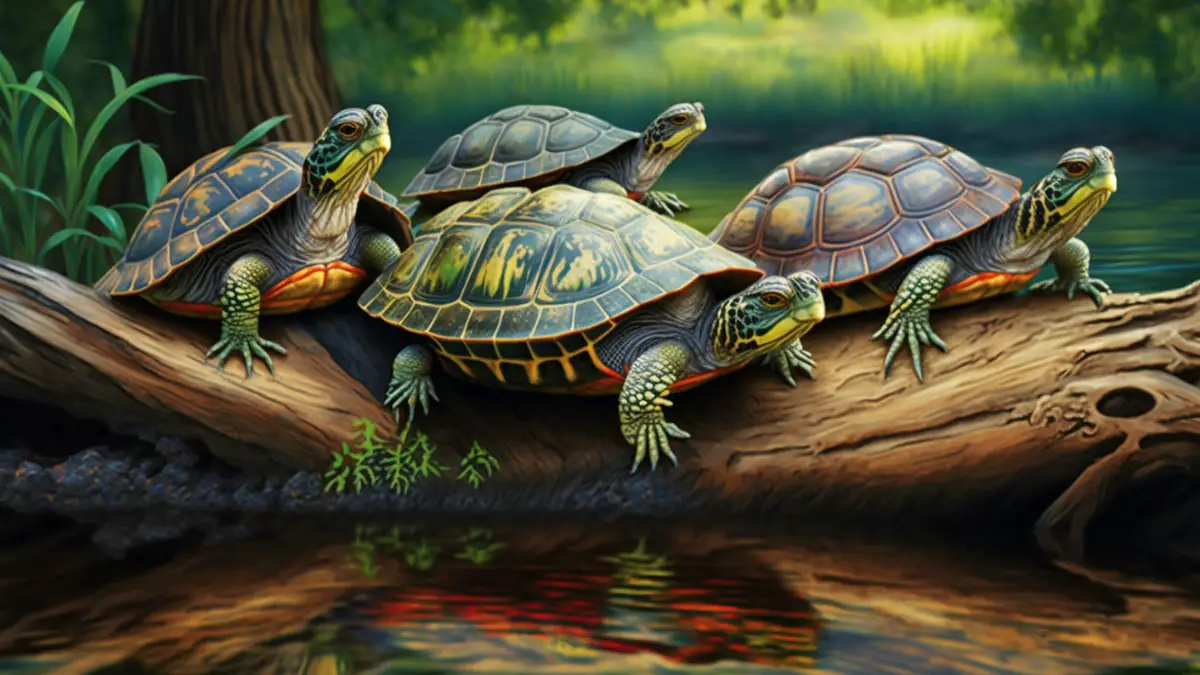The Devastating Effects of Climate Change on Turtles and Their Habitats
Climate change is one of the biggest challenges that our planet faces today. Its effects are being felt far and wide, and animals inhabiting the globe haven’t been left behind. One of the animal species that’s on the receiving end of the hard-hitting effects of climate change is the turtle.
Different turtle species are already experiencing climate change effects in terms of rising temperatures that disrupt their migration, food sources, and nesting sites. The occurrence of extreme weather events and ocean acidification have also led to the disruption of the habitats and populations of turtles.
In this article, we’ll discuss the full details of the devastating effects of climate change on turtles and their habitats. We’ll also discuss measures being taken to mitigate the climate change effects on turtles.
Climate change impacts turtles and their habitats
Contents
Here, we’re going to discuss the effects of climate change on the environment and how it poses an existential threat to turtles.
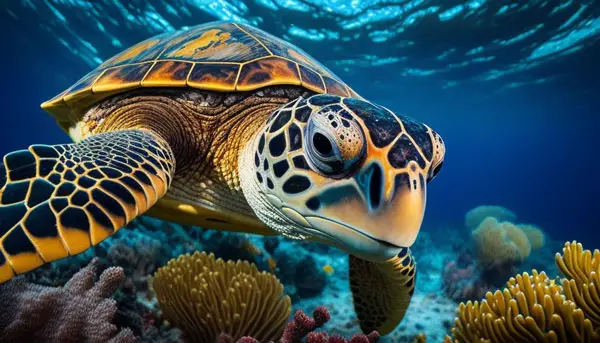
Rising temperatures
One of the ways climate change affects turtles is through rising temperatures. Here are the main threats of rising temperatures on turtles:
Loss of nesting grounds
Rising temperatures due to climate change are responsible for melting of polar ice, and this has direct effect on rising sea levels. This leads to erosion and loss of beaches which act as major nesting grounds for sea turtles.
Mind you, sea levels rise is projected to be around 0.18 to 0.59 meters by the end of the 21st century. (Source).
Even the smallest rise in the sea levels is enough to cause significant loss of beach nesting areas for sea turtles.
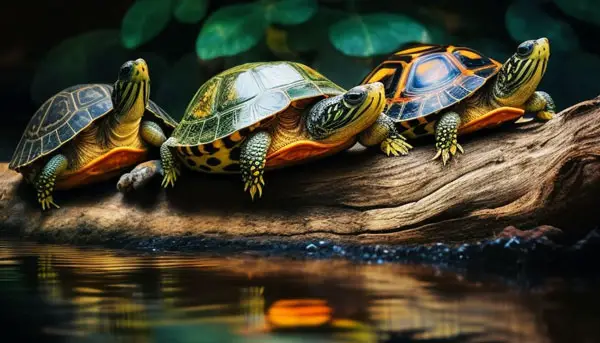
Some of the regions in the US that are highly vulnerable to rising sea levels include Chesapeake Bay, Louisiana, and southern Florida.
Florida beaches serve as one of the most crucial nesting habitats for sea turtles in the world. So, having them affected can lead to fewer turtles being born, causing sharp declines in the sea turtles population.
Disruption of migration patterns
Sea turtles usually rely on ocean currents as their highways to guide them to travel as well as find food. Unfortunately, the warming ocean temperatures tend to alter the ocean currents and impact the abundance and distribution of prey species that serve as food for sea turtles.
These disruptions due to climate change can lead to southerly species of turtles being found in the northerly regions, which is outside their normal range. In addition, this can also affect their nesting timing, further endangering their populations.
Loss of habitat and food sources
An increase in warm seas also endangers food sources, e.g. coral reefs, and habits for sea turtles. Productivity is way higher in the oceans when the temperatures are cooler, ensuring many ocean organisms, including sea turtles get enough food.
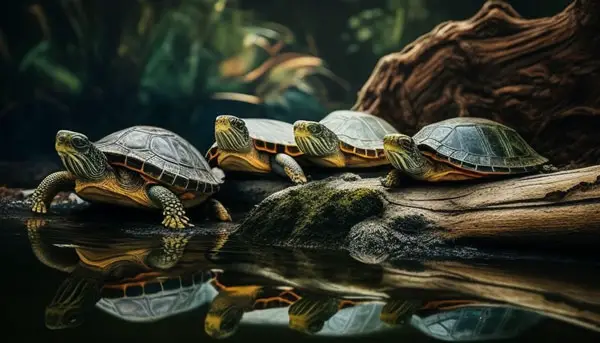
However, when the oceans get warmer and food becomes less, there’s a decrease in nesting activity and fewer sea turtles will be born. This will lead to declining in the turtle populations.
Note that such effects are already being monitored in some turtle populations in various regions including West Atlantic and West Pacific Ocean.
Imbalanced sex ratio of turtles
The gender of a turtle at birth is heavily influenced by incubation temperatures. That said, the rising temperatures can lead to eggs hatching into more females than males.
If the incubation temperatures fall below 81.86 degrees Fahrenheit, the eggs will hatch into male turtles. Any incubation temperatures above this mark will lead to female hatchlings.
And this disrupts the gender ratio of these creatures, thereby affecting their reproduction process.
As the nesting grounds or beach sand become hotter, they also lead to a decrease in the hatching rate of the turtle’s eggs, and in some cases, cause total nesting failure.
A recent study conducted in Australia found that the green sea turtle population around Raine Island is made up of 99% females. This is an eye-opener to just how climate change can affect the gender ratio in turtles.
Extreme weather events
Weather extremities have also been linked to climate change and include hurricanes, tropical cyclones, flooding, etc.
Such events lead to more severe and frequent storms that are sure to cause beach erosion, affecting the vital nesting grounds for sea turtles.
This endangers the turtle population by significantly decreasing the success rates of the animals nesting.
Ocean acidification
Ocean acidification is another effect of climate change that significantly interferes with turtle habitats. How does this happen?
Well, as the ocean takes in carbon dioxide from the atmosphere, it dissolves into saline water—forming carbonic acid. This acid then breaks apart and forms hydrogen ions and bicarbonate ions.
Marine organisms use carbonate ions such as crabs, corals, clams, etc., to grow their shells as well as thrive. The absorption of these ions leaves a high concentration of hydrogen ions, causing ocean acidification (Source).
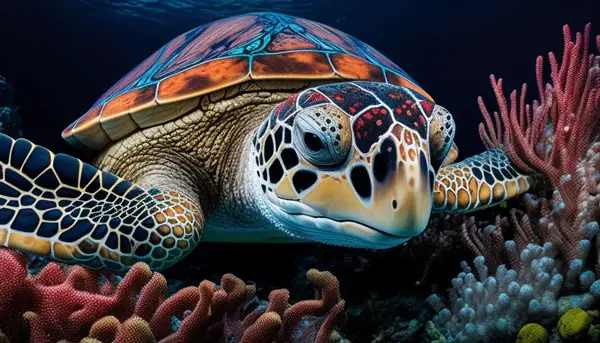
As the water becomes more acidic, the more the calcium carbonate making up these coral reefs dissolves. Since coral reefs are essential breeding grounds and habitats for sea turtles and other organisms, their disappearance will leave the turtles with a huge loss.
The hawksbill turtle, for instance, exclusively feeds on sponges, thus relying on coral reefs and their related biodiversity for food foraging and shelter.
Ocean acidification also affects key food sources for these turtles such as seagrass and other aquatic plants. These provide your turtle with essential nutrients, and if they’re gone, the turtles will suffer food shortages. (Source).
Increased acidity levels can also affect the behavior of turtles. As they’re not used to living in such conditions, these animals may become easily disoriented, making it difficult for them to navigate to the feeding grounds and nesting sites.
It may also affect their ability to sense and respond to their surroundings, which can seriously threaten their survival.
What measures are being taken to mitigate the climate change effects on turtles and their habitat?
In the wake of all these challenges facing turtles due to climate change and training for their survival and existence, various measures are being put in place to help mitigate the effects.
For instance, conservation efforts focused on reducing carbon emissions and protecting the turtle’s nesting grounds have been put in place.
Enhancing and restoring degraded habitats is another measure being put in place to help increase the turtles’ resilience to climate change. This involves activities such as habit creation, restoration of wetlands, reforestation, etc.
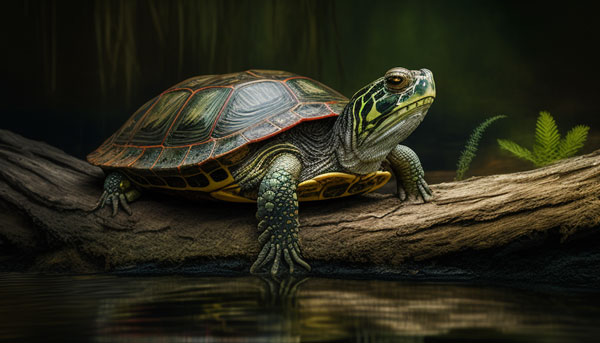
Researching and monitoring the effects of climate change on turtles is also ongoing to help come up with better conservation efforts.
Above all, the public is being educated on the importance of turtles in our ecosystem and the impacts climate change has on them.
Citizens are being encouraged to follow steps that reduce carbon emissions as well as support various conservation efforts for turtle populations.
Final Verdict
The turtles are already experiencing the impact brought about by climate change on our planet. They’re already feeling the heat through rising temperatures that lead to disruption of their breeding grounds, migration routes, food sources, sex ratio of turtles. Climate change also causes extreme weather events and ocean acidification which further disrupts the turtles’ life. All these activities threaten the survival of turtles and their populations are trending downward.
Fortunately, various measures are being taken to help control the effects of climate change on turtles. These include climate-smart conservation efforts, restoration and enhancement of habitats that are suitable for turtles, and researching and monitoring turtle populations to help come up with better conservation efforts. The general public is also being enlightened on the importance of turtles to our ecosystem and the dangers climate change poses to them.
